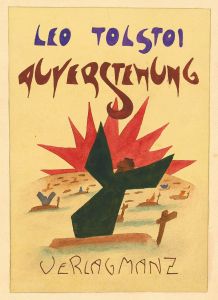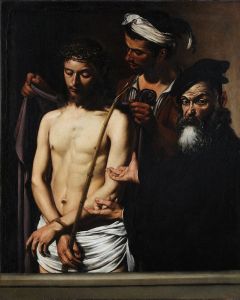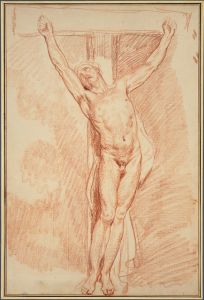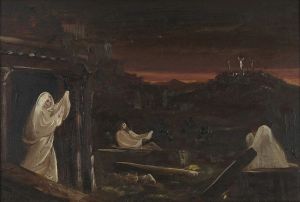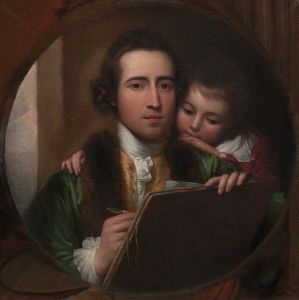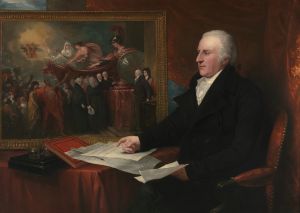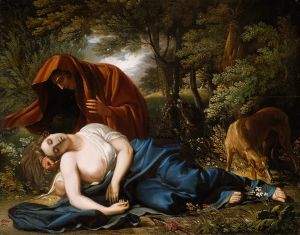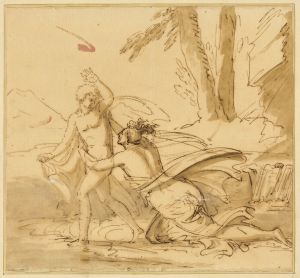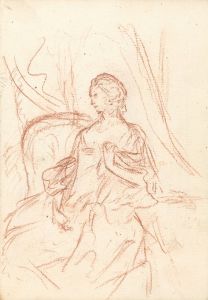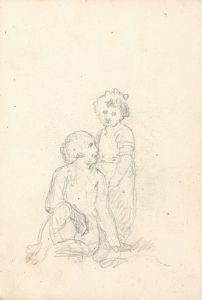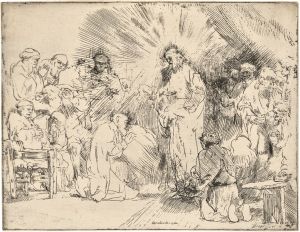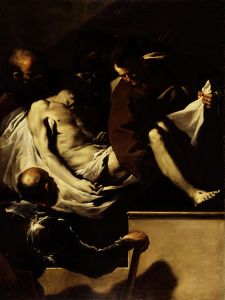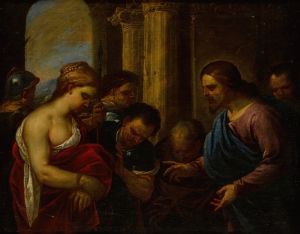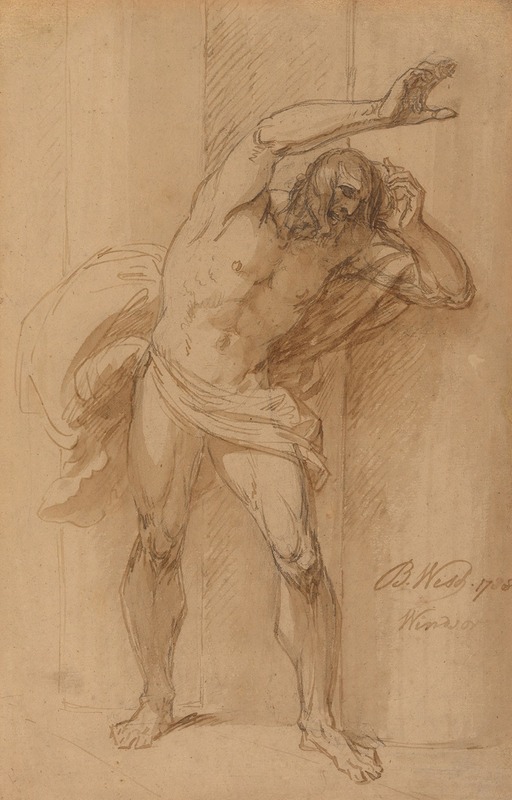
Study for the Crucifixion
A hand-painted replica of Benjamin West’s masterpiece Study for the Crucifixion, meticulously crafted by professional artists to capture the true essence of the original. Each piece is created with museum-quality canvas and rare mineral pigments, carefully painted by experienced artists with delicate brushstrokes and rich, layered colors to perfectly recreate the texture of the original artwork. Unlike machine-printed reproductions, this hand-painted version brings the painting to life, infused with the artist’s emotions and skill in every stroke. Whether for personal collection or home decoration, it instantly elevates the artistic atmosphere of any space.
"Study for the Crucifixion" is a painting by Benjamin West, an influential Anglo-American artist known for his historical and religious works. Benjamin West was born in 1738 in Springfield, Pennsylvania, and became a prominent figure in the art world during the late 18th and early 19th centuries. He is often credited with helping to establish the neoclassical style in painting and was a founding member of the Royal Academy in London, where he later served as its president.
The painting "Study for the Crucifixion" is a preparatory work for one of West's larger compositions. As the title suggests, it is a study, meaning it was likely created as part of West's process of developing ideas and compositions for a more finished piece. Such studies were common practice among artists, allowing them to experiment with form, composition, and lighting before committing to a final version.
West's religious paintings often drew from biblical narratives, and the crucifixion of Jesus Christ is a central theme in Christian art. In "Study for the Crucifixion," West would have focused on capturing the emotional intensity and spiritual significance of the event. His approach to religious subjects was characterized by a blend of dramatic realism and classical restraint, aiming to convey both the humanity and divinity of the figures depicted.
The study likely features key elements typical of crucifixion scenes, such as the figure of Christ on the cross, the presence of mourners or witnesses, and the depiction of the surrounding landscape. West's ability to convey emotion and narrative through composition and expression would have been evident in this work, as he was known for his skill in creating dynamic and engaging scenes.
Benjamin West's influence extended beyond his own works; he was a mentor to many artists, including notable figures such as John Singleton Copley and Gilbert Stuart. His role in the art world of his time was significant, as he helped bridge the artistic traditions of Europe and America, bringing European techniques and styles to American artists and audiences.
While "Study for the Crucifixion" itself may not be as widely recognized as some of West's completed works, it represents an important aspect of his artistic process and his dedication to exploring complex religious themes. West's contributions to art history are marked by his ability to blend narrative depth with classical aesthetics, making his studies valuable both as individual works and as part of his broader oeuvre.
Overall, Benjamin West's "Study for the Crucifixion" exemplifies his approach to art as a means of storytelling and spiritual exploration, reflecting his status as a pivotal figure in the development of Western art during his lifetime.





